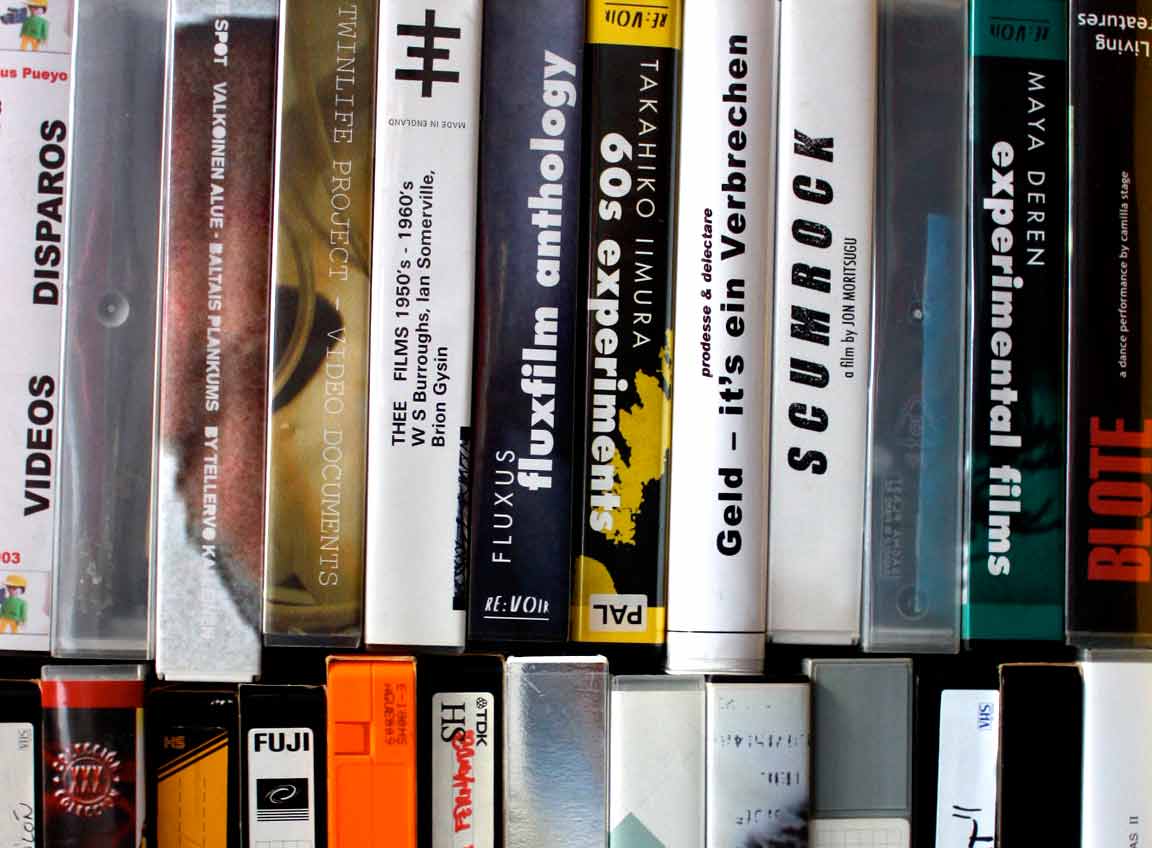

FILMS
1. “Robador. Sinfonía de una calle” 2011. Damián Peralta Mariñelarena (México, España) 28 minutos.
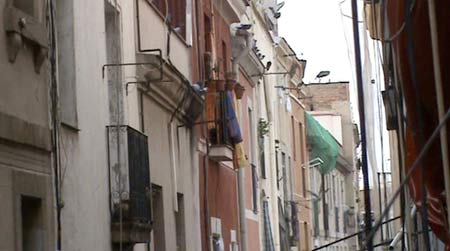
Proyecto de creación videográfica que se mueve libremente entre el cine de ensayo, el documental y el videoarte. Robador: Sinfonía de una calle, es el resultado de un año de filmaciones, desde la ventana de un tercer piso, de la calle Robador, en el emblemático barrio de inmigrantes del Raval, en el centro de Barcelona. A lo largo de un ficticio día condensado, podemos mirar e intentar penetrar en los universos paralelos que se citan día a día en este fascinante lugar, cruce de historias, lenguas y culturas diferentes.
Web: http://damianperalta.net/es/arte/36-proyectos/60-robador-sinfonia-de-una-calle
2. “Après le feu” 2010. Jacques Perconte (Francia) 7 min 9 s.
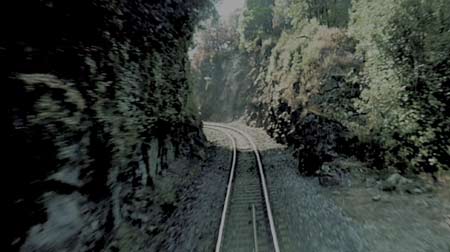
In Ajaccio, when walking up in the middle of the night, some people thought their houses was on FIRE… In August 2009 I travelled by train through these Corsican lanas burnt by summer fires. The landsacape will be different during many years. I filmed the devastation. A few miles from Ajaccio, Corsica, burnt land is buckling Ander the weight of its colors. The ground is falling apart, realeasing pictural energies that take over the sky. I’m starting at the vanishing skyline.
And the train keeps on rolling…
3. “Addictions” 2011. Giovanni Bucci (Reino Unido) 2 min.
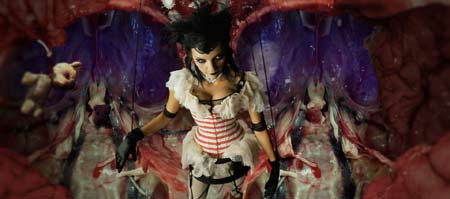
The video is about addictions, mainly to technology, but it's open to various interpretations. Years ago the idea behind technology was to give people more free time from work and give us a better life. So nowadays, with the possibility for the majority of people to have access to electronics and hi tech, is it true that we have more spare time and a better quality of life? Or have we become addicted to the technology that surrounds us everyday and it has suck us into it? But humans get addicted really easily to a lot of things in life and this video is also a metaphor about addictions in general, about being manipulated without even realizing it or without reacting.
4. “Santa Eva” 2009. Judith Mata & Carla Fernández (España) 11 min.
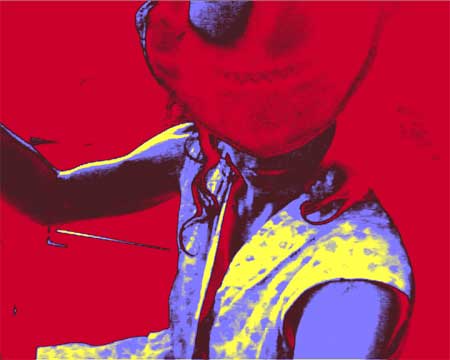
A modo de exorcismo Santa Eva presenta las efervescencias de una mujer que ya no cabe dentro de sí.
5. “Toma de posesión” 2010 Francisco Molina & Judith Mata (España) 14 min.
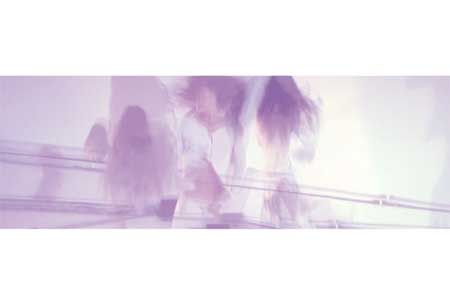
Se trata de investigar las relaciones entre cuerpo, espacio, música, tiempo y color, y en cómo los resultados estéticos de este conglomerado de interacciones son capaces de transformar emotivamente al espectador. La disección del cuerpo a través del vídeo, el movimiento del artista en directo y la unión temporal entre estos fragmentos, el color y la música finalizarán en un hecho en el que gracias al estudio de lo parcial se alcanzará lo compacto.
6. “Than” 2010. Danny Winkler & Emilia Loseva (Reino Unido) 27 min
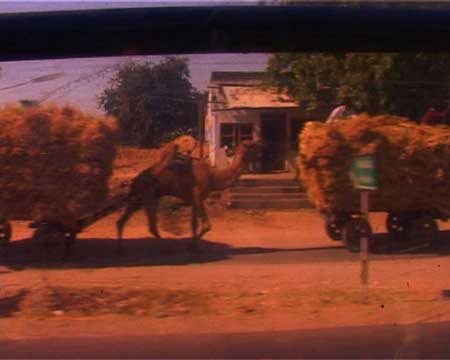
An embellished trip to Than Monastery in Kutch, India, where the last monk remains, surrounded by caretakers and decaying frescoes. Broken into mental segments and emocional gestures. Than is accompanied by the haunting music of Charlemagne Palestine.
The structural composition with the subheadings reflecto n Pilles Deleuze’s cinematic philosophies. Charlemagne Palestine’s music was recorded in different locations and different pieces were layered one onto another which encouraged us to use similar techniques in clearing the imaery of the film: broken and mended spatial frescoes framed by the totality of the experience.
7. “Genghis Khan’s Dreams” 2009. Danny Winkler & Emilia Loseva (Reino Unido) 12 min 44 s.
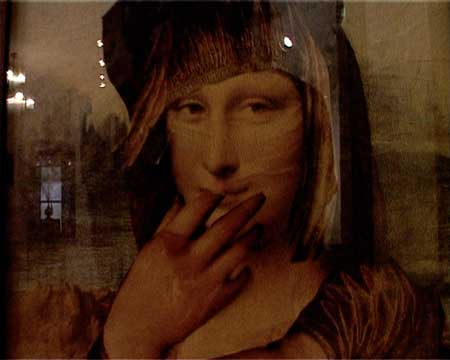
The film was made out of footage shot in the museum of legendary Soviet director Sergey Parajanov in Yerevan, Armenia, with their co-operation, and completed in our own Studio in London.
We presnt this film to swell amongst your senses. Sculptures as a poetic movement with a desire to match that dreamy state of breath and to visualize the rhytm of the substance pulsating in between the real and unreal, Genghis Khan’s Dreams is short and interrupted like a deamitself. Images flota and tranform to livid flickr by the end. On the bordeline of imaginable and posible scenarios, the camera transcendí the unpredictable cadentes of eroded textura, fragile frames and vibrating colours.
8. “Slick Horsing” 2010. Kiron Hussain (Inglaterra) 2 m 44 s.
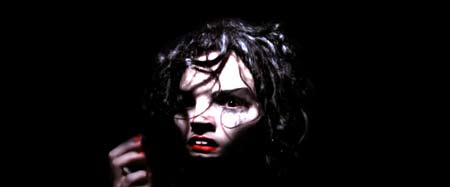
A fragmented allegory — the lady kindles her photo-sensitive epilepsy in lieu of opium.
Web preview: http://vimeo.com/kiron/slick/
9. “Walking City Redox” 2011. Michiel van Bakel (Paises Bajos) 3m 30s
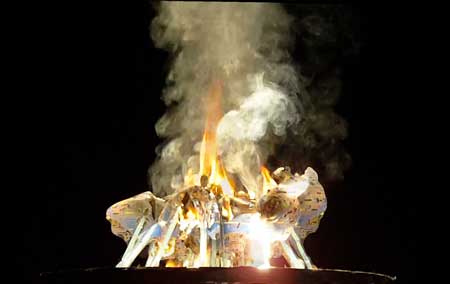
The extremely slow combustion of a utopian model (Walking City by Archigram) forms a symbolic image and an aesthetic experience: the ineffable beauty of destruction.
Archigram’s Walking City : jubilant notion of consumer choice combined with optimised technology that relies on infinite resources. (1964)
Web: www.michielvanbakel.nl
10. “Hello! An idea for a new video” 2010. Neno Belchev (Bulgaria) 3 m 3 s.
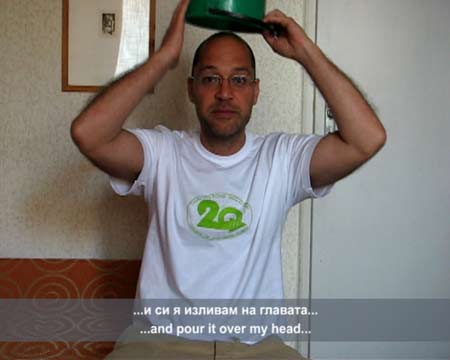
The first minute is an interpretation of two old jokes in nowadays situation. After that, in next 2 minutes there are some explanations about it. But the most important are the last 10-15 seconds from the video.
Web: http://www.vimeo.com/nenobel
11. “D.I.V.A” 2011. Lara Celenza (Italia) 6 min 24 s
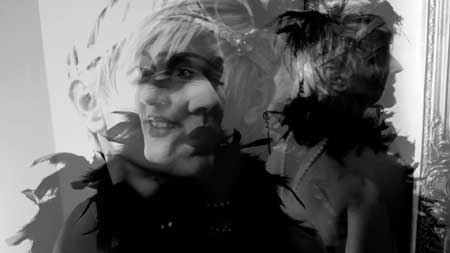
A tragic chanteuse finds her political consciente into the mirror. A whip-wielding dominatrix dances on the ruins of a wounded capital. An ethereal creature from deep space weaves a network of virtual body parts.
Guided by the memories of german singer Antja Palka, we embark on a visual and conceptual journey that will take us from the gravest atrocities of World War II to the darkest recesses of cyberspace.
12. “Neurología 09 @ Goin’s palace” 2011. Antón Ignorant (Argentina, España)
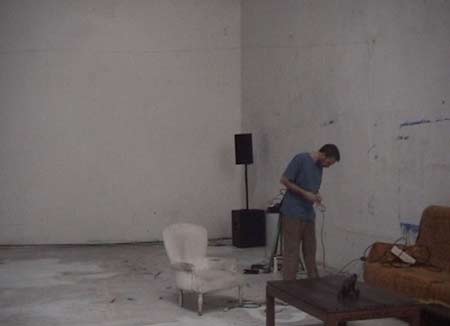
13. “Axiom” 2010. Rally Grizzell Larson (Philadelphia, EEUU). 1 min
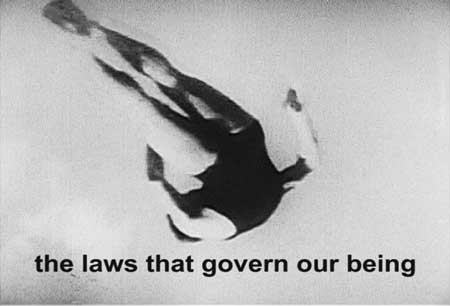
The rhythm of clapping hands, the repetition of images in equally timed segments: We are lulled and seduced. Like any other high-functioning receptor, the human brain is indiscriminate about what it picks up. How then do we resist the seemingly benign when we're mesmerized by it in spite of our better judgment?
web: http://www.rhizome.org/profiles/sallygrizzelllarson/
14. “Metropol Drift Reaction” 2011. David Anthony Sant (Corea del Sur , Reino Unido) 4 min 11s
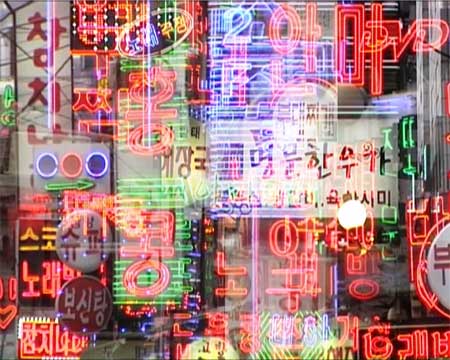
The filming method used to create this film can best be described as Extemporaneous Film Making. The filming process evolved over a period of four weeks with instances of poetic motion being captured erratically and within three or more takes. Decisions about what to capture and what not to capture germinated and became themes within a work that documents an odyssey through some of the districts of Seoul, South Korea.
15. “Twelve haikus in lethargy (unfinished)” 2010. Danny Winkler & Emilia Loseva (Reino Unido) 7 min 17 s
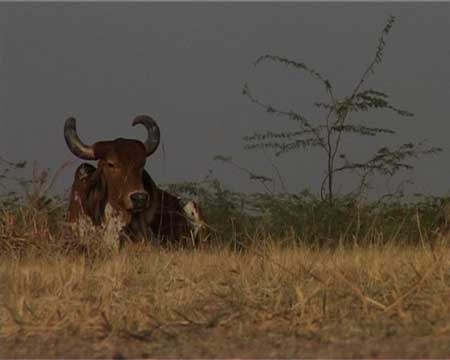
The passive realism of nature reveals itself through simplicity and lightness. Three lines of verse draw on the correlation between image and phenomena in one temporal point. Using the manoeuvres of this stylised form, the film captures with minimal means of expression the rhythm of the way of things.
It creates that special atmosphere which transcends through imagery and reflects in a stylised manner the delicate spirit of post-silver-age haiku, which has since remained lethargic and still represents an unfinished story of the genre.
16. “A Movement Towards” 2010. David Anthony Sant (Reino Unido-Malta) 6 min 33 s
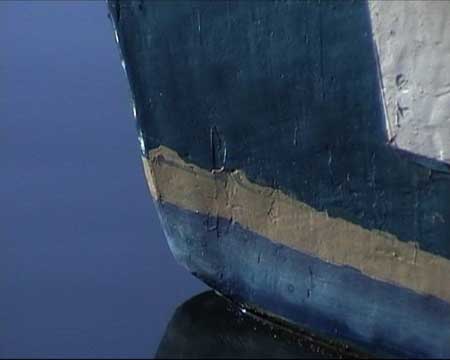
The film is an experiment in associated imagery. Within each sequence are images of water as it is pulls and pushes against and together with a diverse but considered range of materials, surfaces and objects. One sequence of footage will move in one direction only to be followed by another sequence that will move in a different direction. The connection between one sequence and the next is the principle of unity through association.
Web: http://www.youtube.com/davidanthonysant
17. “Somewhere / Elsewhere” 2010. David Anthony Sant (Reino Unido- España) 3 min 6 s
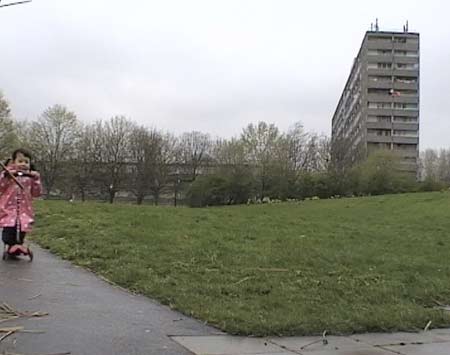
Structurally, this experimental film is very much influenced by abstract expressionist painting. Lines, patterns and colours are combined with movement and direction. Tranquility is soon replaced with frantic flashes of light and rapid panning shots. Experiences of locations and space are transitory. Dreamless tranquility remains evasive.
Web: http://www.youtube.com/davidanthonysant
18. “Mirrors” 2010. Demetra Englezou (Chipre) 3 min

Mirrors are a motion art video that reflects energy of the
movement, sound, harmony, space and gravity. Mirrors guide you through a
journey where you are listening openly and accepting the feelings that
reflects on your instant emotion. Finally, the mirrors are a doorway to
another world. It is a metaphor of possible imaginative worlds.
19. “Der Bau” 2010. Thom Kubli (Alemania) 22 min 44s
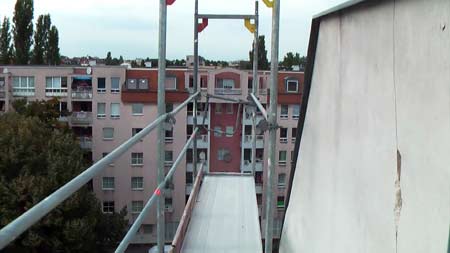
The first scene shows the actual atelier space of the artist in Berlin. The route -seen through the lens of a handheld camera- leads through the open window on a scaffold that is installed on the outside of the building. The camera eye follows the route upwards, passing several floors to the highest point of the construction. Consistently it scans the large complex of buildings, the different levels of the scaffolding, the deserted inside spaces of the building, the social and architectural surrounding. While the distant and vertiginous view from the heights of the scaffold becomes continuously readjusted by the camera eye that examines the environment, the descent from the metal bar construction finally leads back to the starting point, -the inside space of the atelier. The whole shot consists of a single performance. There ́s no cut or edit within the whole lengths of the video.
The sound of the video consists of a slowly and steadily changing tone, a minimal drone.
“The audio originally derives from an improvised guitar piece that I recorded in New York in 2010. The quietest space in the noise-flooded apartment of my hosts was the bathroom. So it became my recording space and mental residuum for a couple of hours.” The recordings have been digitally decelerated and spatially abstracted to an extent that they transform into a constant sonic flow.
20. “The Art-Qaeda Project” 2010. Wei-Ming Ho (Taiwán) 7 min 3 s
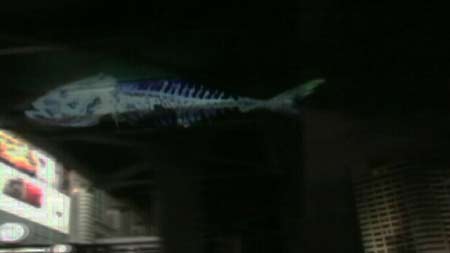
In a weird atmosphere, the project set out for an exciting adventure. Did the images represent the secret signals, an extraordinary parade or a silent protest? By means of guerrilla art action, we used the high power projector to project the images in motion with high mobility to display a stunning visual firework and presented the conversation between the images and the city environment.
21. “Self-Destruction for eternity” 2011. Wei-Ming Ho (Taiwán) 6 min 26 s

Who decides who's good or bad? Who decides who could stay alive or die? Who is the next victim? The calm before the storm...are they all illusions? Or there are realities of dark side and tragic flaws hidden behind the scenes? Using the concept of Machinima to record the process of playing games, we collected the correlate elements from different games and remix them to re-comprehend
22. “Marino de tierra” 2010. Jeymer Gamboa (Argentina) 20 min 21 s
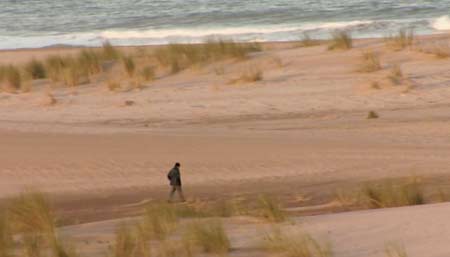
Un hombre que trabaja como torrero en un faro de la costa argentina debe sobrevivir a la soledad y la lentitud del tiempo a través de una actitud contemplativa frente a la naturaleza que le rodea.
23. “Rastros” 2010. Jeymer Gamboa (Argentina) 14 min 24 s
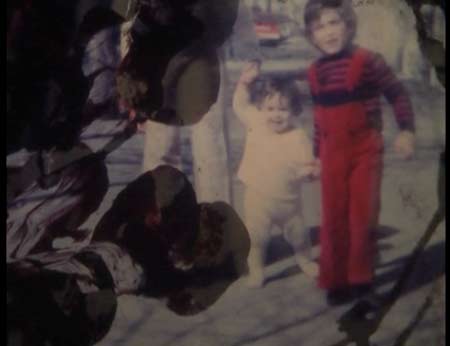
Un hombre realiza un viaje en auto con un oscuro objetivo en el que intentar‡ borrar los rastros que ha dejado.
24. "The Face. Isle Of Lox” Leyla Rodriguez & Cristian Straub (Argentina, Rumanía, Alemania) 3 min 54 s
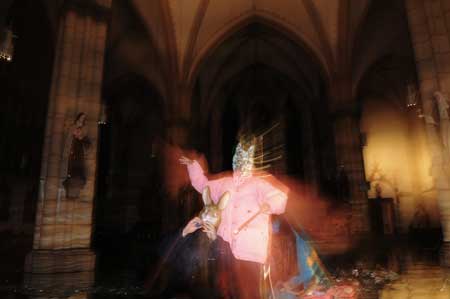
25. "The Pink Situation". Isle Of Lox” Leyla Rodriguez & Cristian Straub (Argentina, Rumanía, Alemania) 3 min
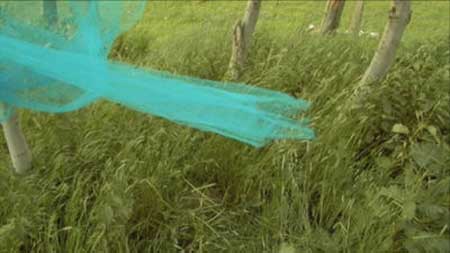
26. " The Fruits Electric. Isle Of Lox” Leyla Rodriguez & Cristian Straub (Argentina, Rumanía, Alemania) 3 min 44 s
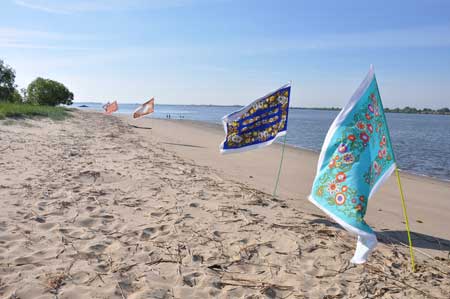
27. “All in All II” 2011. Jonathan Gillie (Reino Unido) 1 min 2 s.
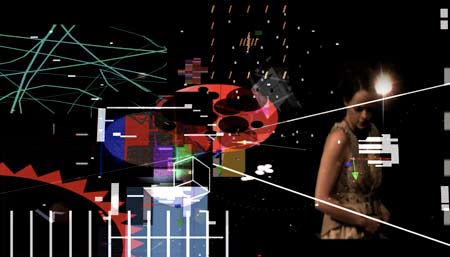
To paraphrase Niels Bohr: “To think about the paradoxical nature of quantum mechanics is to think in images, because the only way to know anything about the invisible is to create an image of it. It then becomes, by definition, a human construct, a model, a half-truth trying to hint at something real.”
28. “Cosmism” 2011. Jonathan Gillie (Reino Unido) 1 min 5 s.
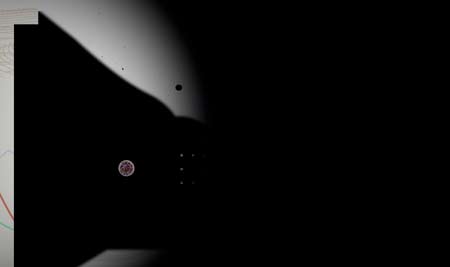
29. “Point Never” 2010. Jonathan Gillie (Reino Unido) 3 min 20 s.

30. “Higgs Bridge” 2010. Jonathan Gillie (Reino Unido) 2 min 56 s.
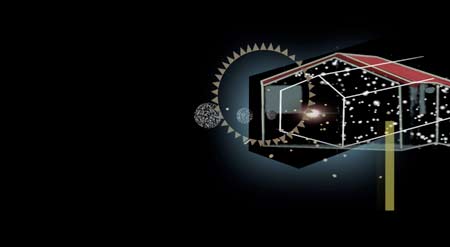
31. “Abtract No4” 2010. Jonathan Gillie (Reino Unido) 1 min 20 s.

32. “Gravity” 2010. Jonathan Gillie (Reino Unido) 1 min 30 s.

33. “Europa” 2011. Laura Fernández Blanco (España) 3 min. 40 s.
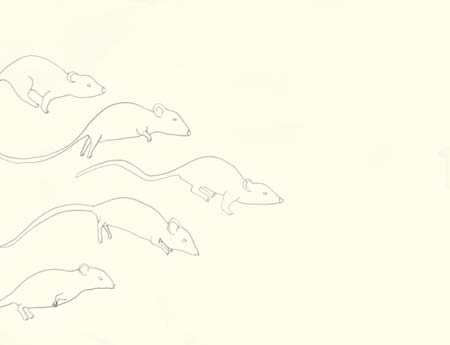
En esta pieza se representa la vida que se abre camino más allá de la existencia o no de las fronteras, a través del uso de imágenes antiguas de ciudades europeas como Berlin, Gante, Praga, Palermo o Barcelona y la representación de imágenes de animales en movimiento, aludiendo al uso que se ha dado en la mitología como explicación a los comportamientos humanos.
34. “Stories” 2011. Donato Rossi (Italia) 9 min. 29 s.
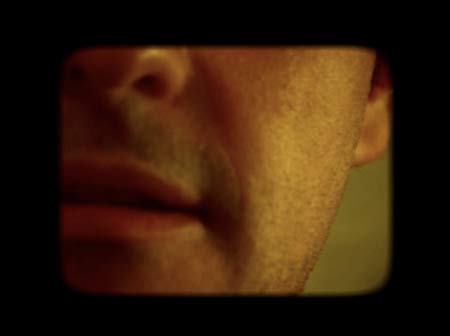
I’m looking for a store. Many people are looking for a store. Many stories have been told yet.
35. “Bariku Light” 2011. Asier Abio (Euskal Herria) 10 min.
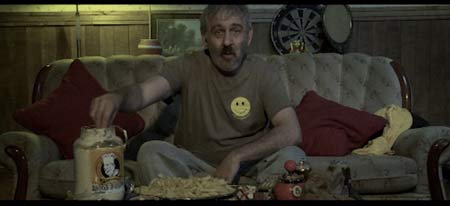
Feliciano cena patatas fritas con mayonesa Light mientras ve la televisión. Cuando empieza a ver sexo, pierde la cabeza y ya no puede parar de comer.
36. “Contra la gravedad” 2010. Asier Abio (Euskal Herria) 45 min.
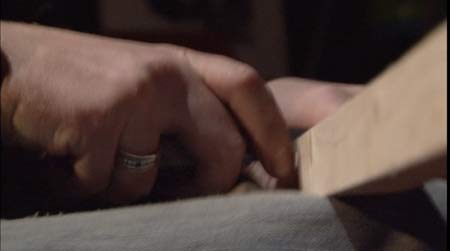
El realizador de video Asier Abio contacta con Oaf Kehler, bailarin de danza contemporánea y con Mikel Xedh, música experimental para llevar a cabo una exploración sobre el mundo de la improvisación y las sinergias entre distintas disciplinas artísticas.
37. “La Fuga” 2010. José Vieira (Portugal) 3 min 2 s.
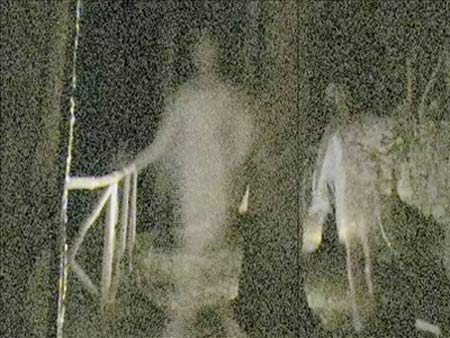
Video produce in Belforte del Chienti (Italy) on a residency program at MIDAC - Dynamic International Museum of Contemporary Art. A white figure runs on the night apparently escaping from her self... Una figura en blanco se fuga de si misma en la noche...
Web: http://www.youtube.com/watch?v=GL7mr8HwWqc
38. “Siren Song” 2010. Marc Neys (Swoon) (Bélgica) 3 min 48 s.
Videopoem based on the poem “Siren Song” by Margaret Atwood. A story about the eternal male female attraction.
39. “The Universe” 2010. Marc Neys (Swoon) (Bélgica) 2 min 10 s.
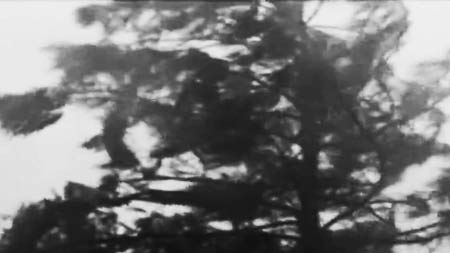
Videopoem based on the poem 'Universe' by Neil Ellman.
I made this film after the heavy storm that took 5 lives at the 'Pukkelpop-Festival' in Hasselt (Belgium) on the 18th of August. I used 'you-tube' footage from ceveral floodings and storms.
40. “What do animals dream?” 2011. Marc Neys (Swoon) (Bélgica) 2 min 10 s.
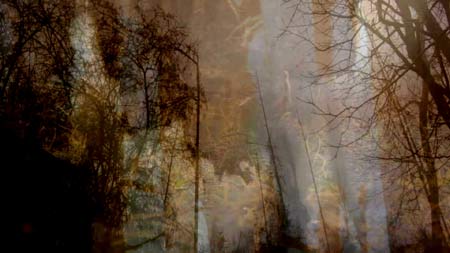
Videopoem based on the poem 'What do animals dream?' by Yahia Lababidi.
Alice comes back to the forest...looking for dreams?
41. “Grow” 2010. Marc Neys (Swoon) (Bélgica) 2 min 59 s.
The poetic beauty of growht in nature.
42. “Unentitled” 2010. Marc Neys (Swoon) (Bélgica) 3 min 17 s.
Videopoem based on the poem “Unentitled” by Yahia Lababidi.
Faling asleep on a train with one eye open and the other one down the rabbit hole…
43. “Welcome to hard times” 2011. Marc Neys (Swoon) (Bélgica) 4 min 13 s.
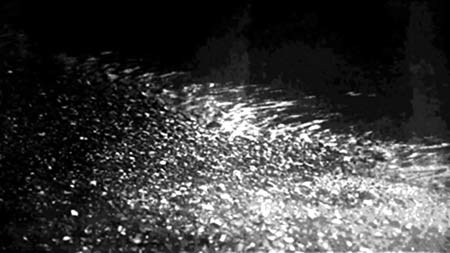
Videopoem for a poem by Howie Good.
Between the waves and the fog, we haven't got a clue of what might be ahead of us.
But sometimes it doesn't feel good!
44. “Sabor blanco” 2011. Jessica Llorente (España) 4 min
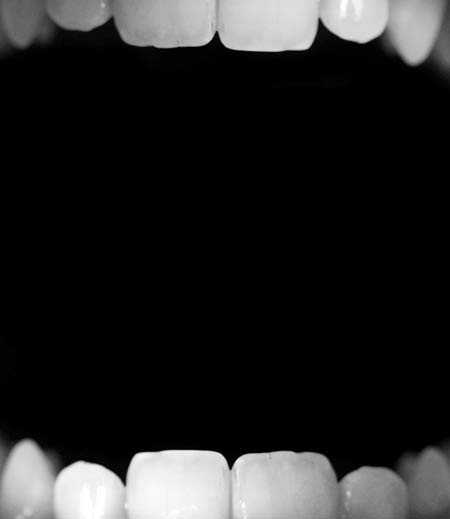
Por los excesos que envuelven el todo, se escucha sin ver, se digiere lo entendido. Masticar imágenes blancas.
Digerir: convertir en el aparato digestivo los alimentos en substancia asimilable.
Asimilar: aprender comprendiendo.
Web: http://www.dosdeases.blogspot.com/
45. “Brizna” 2011. Jessica Llorente (España) 5 min
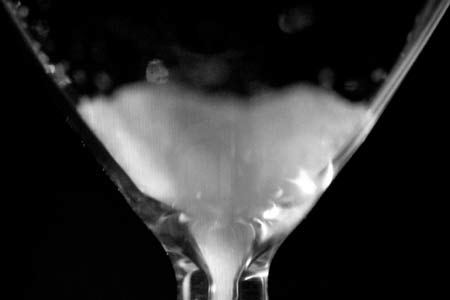
Belleza cotidiana. No hay necesidad de irse lejos, no hay necesidad de irse. Es ésta brizna que cae la que contemplo. La esquina conocida deja de serlo. Un minuto contado pierde su tiempo.
Web: http://www.dosdeases.blogspot.com/
46. “Museum of revolution” 2011. Beate Hecher / Markus Keim (Austria) 5 min.
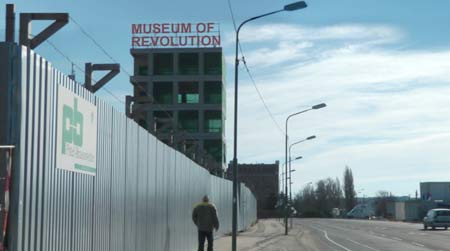
Museum of Revolution: a dismantling of German everyday culture in the age of reaction in front of a museum shell securde with barbwire and a wall.
47. “Vanishing Point” 2010. Beate Hecher / Markus Keim (Austria) 16 min.
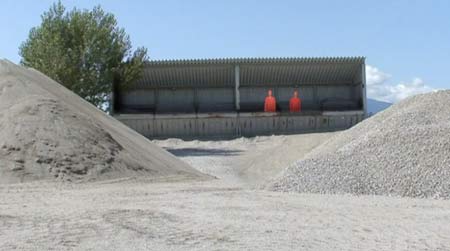
Between glance and glance we are blind. The Picture we have of our environment, is by short closing of the eyes already lying in the past. Vanishing Point looks for these gaps in the human perception –for the visible and invisible, the emerging and disappeareance, process and result.
48. “Bonsai” 2011 Oscar Martin (España) 14 min 32 s
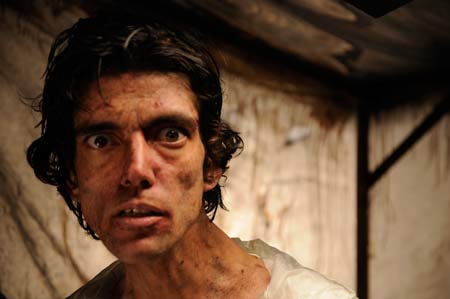
El árbol es un puente entre la tierra y el cielo, lo humano y lo divino. Aquel que pueda cultivar un árbo en un cuenco, tiene asegurada la inmortalidad. Así es el arte del Bonsái.
49. “El regalo” 2011. Irlanda Tambascio (España) 18 min
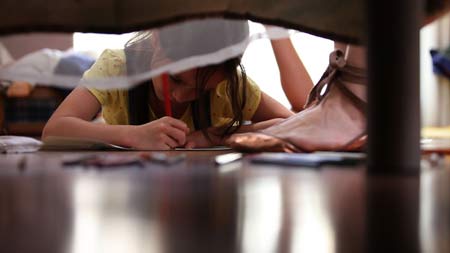
Olivia, una niña de 6 años, celebrará su cumpleaños en un par de días. Mientras ayuda a su madre con los preparativos de la fiesta, sueña con un regalo especial que desea recibir.
50. “Ocho” 2011. Raul Cerezo (España) 13 min 7 s.
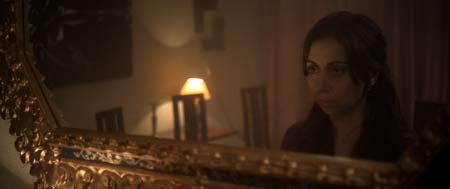
A los 8 años, la voluntad, disciplina y personalidad de un niño empiezan a tomar forma y la distinción entre el bien y el mal se empiezan a definir.
51. “Dislocations” 2010. Celia Eid/ Sébastien Béranger (Francia) 10 min.
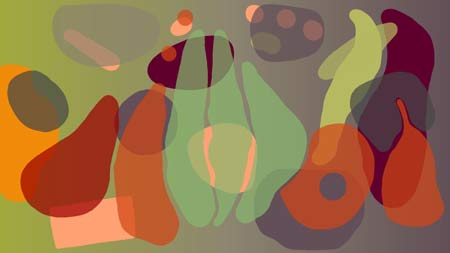
"Dislocations" is a 2D animated and abstract short film, digitally created frame by frame. It is based on a superimposition of layers and on a color contrast. It is musically structured. A high-pitched, metallic voice superimposes the piano. Animation and music are the results of a dialogue between the visual artist and the composer.
52. “Tierra roja” 2011. Miriam Isasi, María Salazar, Víctor Santamarina (España) 5 min 38 s.
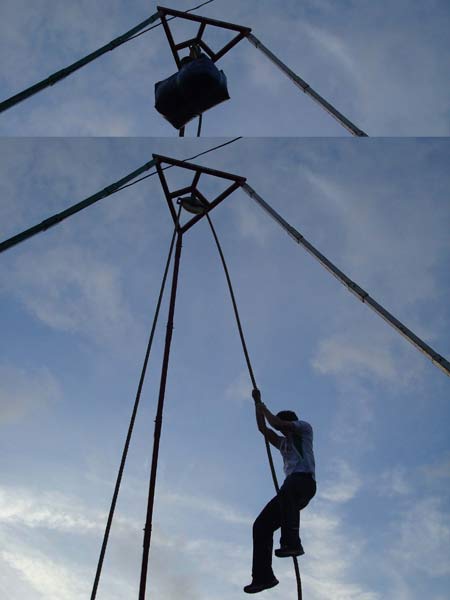
Pamplona 2011. La identidad de la ciudad es un estrato de tradiciones ancestrales que perviven actualizándose con el paso del tiempo. Desde una mirada visitante aparecen los vestigios de la ciudad amurallada pero permeable a la vez al paso de los peregrinos, o a los turistas de San Fermín. Una constante de flujos intermitentes se van sucediendo en el tiempo y generan contextos y situaciones que determinan los rasgos propios de Pamplona y sus habitantes, dando forma a una identidad contemporánea de la ciudad.
53. “2049” 2011. María Salazar Riaño (España) 2 min 23 s
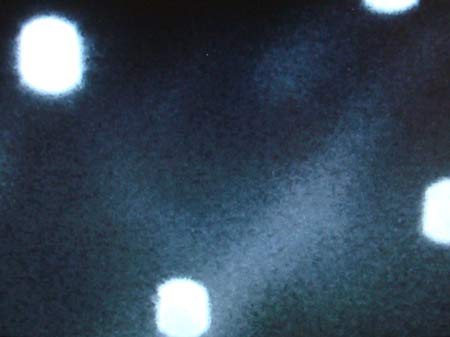
Una noche cualquiera de 2049.
54. “Notebook Phase” 2011 Philipp Artus (Alemania) 6 min
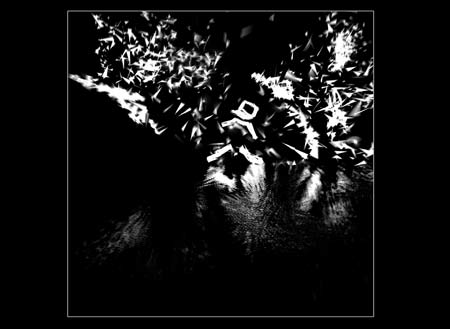
Notebook Phase is a minimalist animation that unites complementary opposites through movement and sound. It portrays a whimsical figure in between nature and technique, noise and silence, structure and freedom.
55. “Jaque mate” 2011 Saray Blades (Euskal Herria) 3 min 30 s.
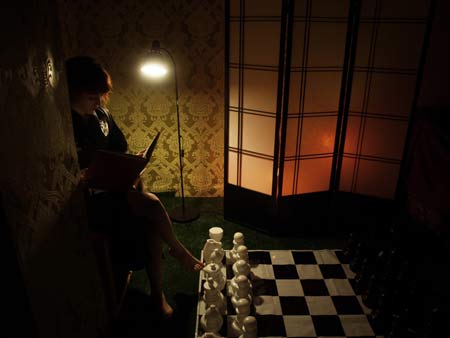
Una peculiar partida de ajedrez que tiene lugar en ningún donde
www.sarayblades.com
56. “Everybody knows that the bird is the Word” 2011 Saray Blades (Euskal Herria) 1 min 45 s.
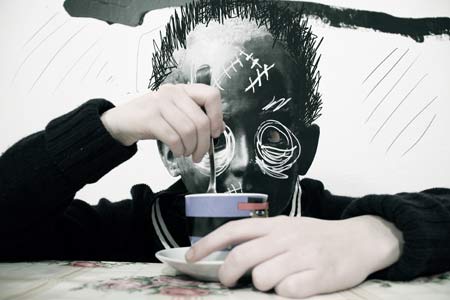
Acciones cometidas durante la infancia, tienen sus consecuentes reacciones en la edad adulta.
57. “Technology will tear us apart” 2010-2011 Saray Blades (Euskal Herria) 1 min 1 s.
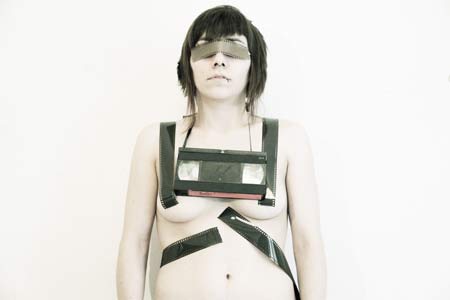
La pieza parte de un discurso en el que se trata la dicotomía analógico vs. digital. Cortos intervalos de tiempo en una reproducción perpetua en la que son mostrados diversos elementos y materiales analógicos y digitales del ámbito audiovisual.
Tras una secuencia, la recepción del trabajo no se termina, sino que se cierra por una larga contemplación permanente. Es un proceso de segmentos temporales con modificaciones mínimas en la edición que aportan niveles de reflexión añadidos.
58. “Facial perception” 2010. Tahir Un (Turquía) 2 min 10 s
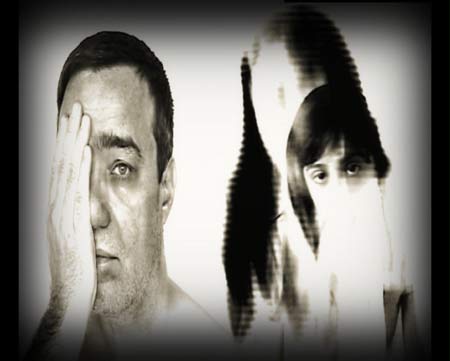
A self-portrait work after i recovered from paralysis. Facial perception is not mean only regeneration but narrates a performance against vicious circle.
59. “Death of cameraman” 2010. Tahir Un (Turquía) 50 s
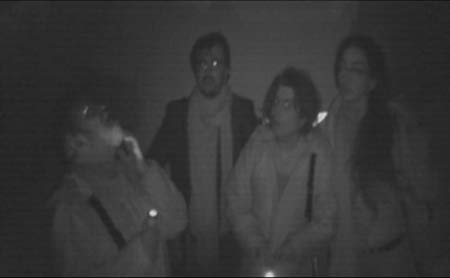
Death of Cameraman is tale of a psychological downfall and an apprehensive look according as claustrophobia.
60. “Runaislamcorner” 2008. Ismael Iglesias (Reino Unido) 16 min 5 s.
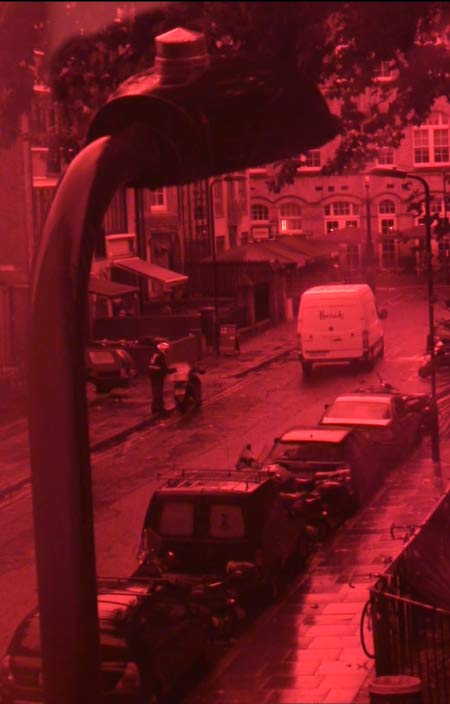
Voyeur vigilando el parque púrpura teñido.
Web: www.ismaeliglesias.com
61. “The searchers” 2008. Ismael Iglesias (Reino Unido) 4 min 59 s.
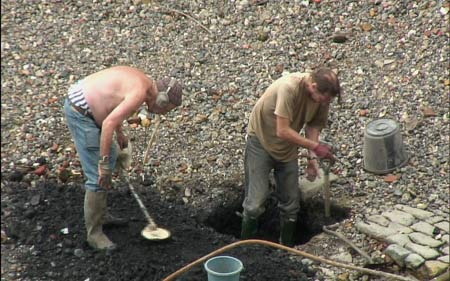
Buscadores de tesoros, losers.......
62. “La re-ocupación de mi esfera” 2011. Ismael Iglesias (España) 4 min 59 s.
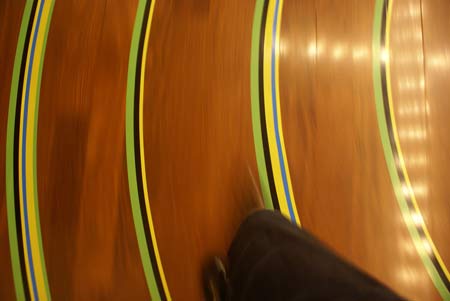
Girando sobre la cruz proyectada, no hay final que todo es camino.
63. “Haya” 2011. Danielle Itzhaqi & Dror Shohet (Israel) 9 min
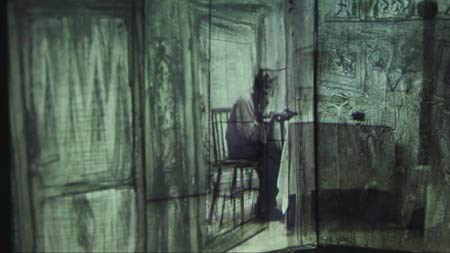
Haya, a Jewish woman who was born in Vienna 87 years ago, never leaves her home in Tel-Aviv, Israel. Surrounded by her cats, she spends her time reading old newspapers and watching random TV shows. She walks around in a space that should be familiar to her but is actually both foreign and fragile.
64. “Heimat Obstruction” 2011. Riccardo Atanasio (Alemania) 9 min.
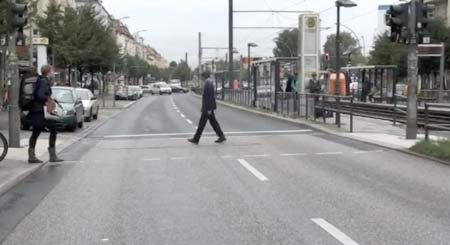
When I perform in the street I like to be focuse but never ignoring the people around me, They are part of it. My aim in art is to be able to open people's perception. When is a painting, a performance in the theatre or in the street it has the aim of connecting us as human beings.
www.matlakas.com
65. “Direction” 2006. Tahir Un (Turquía) 45 s
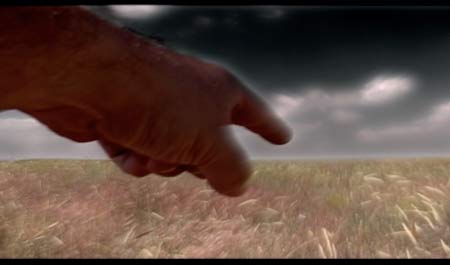
Humour and dramatic end to be directed.
66. “Distress in the city” 2005. Tahir Un (Turquía) 3 min 20 s
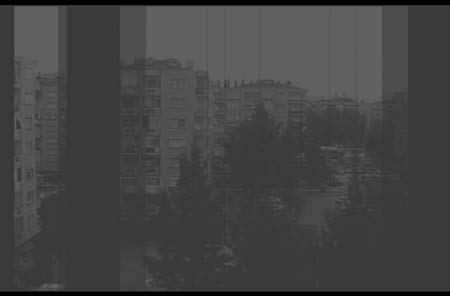
An experimental loop video work for distress in the city and urban-life. The structure of work relates with mediation signs.
67. “Fremden für’s leben” 2011. Arbeitsgemeinschaft für zeitgemässen Blickfang (artist group) ” (The Netherlands / Germany / France) 18 min 2 s.
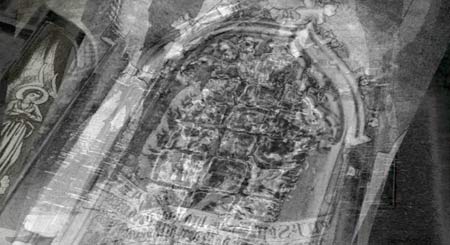
Fremden für’s leben is a collective work. startingpoint are images of french photographer Fred Forestier combined with visuals of dutch artist/musician Jean Quist. Both are also members of music group Städtische Philharmonie Sankt Isengrim, a division of the arbeitsgemeinschaft, which provided the music. German artist J.L. Knopf combined sound and vision. Fremden für’s Leben is part of a series of videos made with images of Fred Forestier. The music is every time freely improvised in a sound design by the dutch musician/technician Frank Kooistra.
Web: http://vimeo.com/channels/117456
68. “Umbra” 2011. Nestor Prieto (España) 6 min
69. “Organic Love Síntesis” 2010. Diego Barrera (España) 19 min
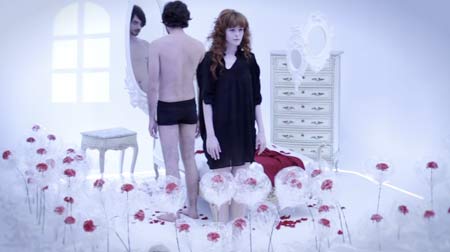
Daniel and Eva are a couple who begin to feel the loss of the bondwhich unites them Daniel began a process to try to reserve it by submitting to the Herat with the love letters he relieves to be wasted, but the indifference moves stealthily.
70. “Nunc et in hora” 2010. Francisco Brives (España) 83 min